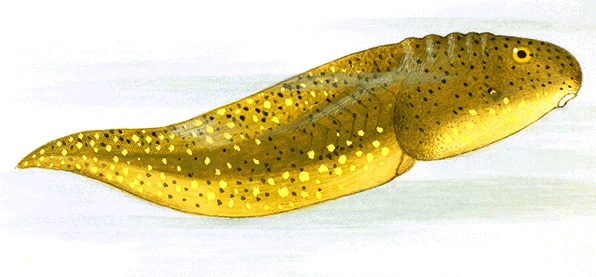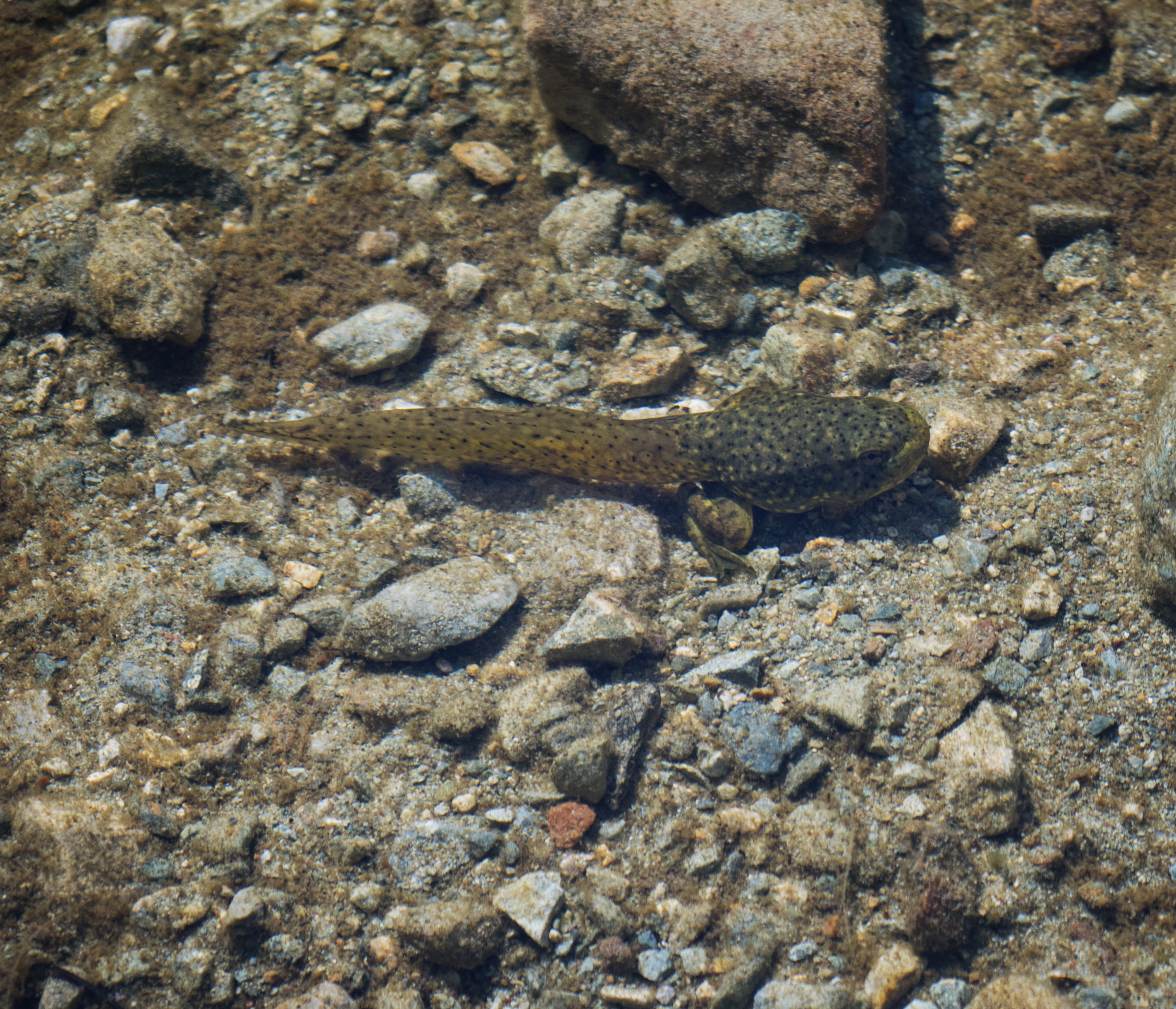Tadpole, also called polliwog, is an immature frog. A tadpole is a larva, which is an early stage of an animal. Tadpoles live in water. When a tadpole hatches from its egg, it looks like a small fish. The tadpole grows larger and eventually develops the physical characteristics of the mature animal. The process of changing from a larva to an adult is called metamorphosis. The tadpole stage may last from 10 days to more than 2 years, depending on the species of frog.

Tadpoles live in shallow waters wherever frogs are found. Most tadpoles inhabit ponds, lakes, or slow-moving rivers. The greatest variety of tadpoles live in the tropics. Most tadpoles hatch from a jellylike mass of eggs laid in the water. A tadpole has a large, rounded head and a long, flat tail. It uses the tail to propel itself through the water. Tadpoles breathe by means of gills. Most tadpoles eat algae and plant material.
Most tadpoles are dark-colored, varying from solid black in common toads to olive-green in some frogs. Tadpoles usually grow less than 1 inch (2.5 centimeters) long. But a fully developed bullfrog tadpole may measure 6 to 7 inches (15 to 18 centimeters) long. Tadpoles of a South American species called the paradoxical frog reach more than 10 inches (25 centimeters) in length.
A tadpole has no legs when it hatches, but it begins to grow hind legs during the first stages of metamorphosis. Gradually, its head flattens and the tail becomes shorter. The digestive system changes, enabling the tadpole to eat insects and other animals. During the final stages of metamorphosis, the tadpole’s front legs appear. The gills disappear as lungs develop, forcing the tadpole to gulp air at the water’s surface. The animal absorbs the remaining part of the tail after emerging from the water to become a land-living adult.
See also Toad.
Loading the player...Frog life cycle

